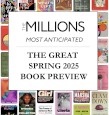Maureen Evans is the Strunk & White of recipe writing, taking the Elements of Style authors' advice to “omit needless words” to a new level. Her book, Eat Tweet: A Twitter Cookbook (Artisan, Sept.), features 1,020 recipes, each one no more than 140 characters, that grew out of her recipe tweets via @cookbook. Evans, who resides in the U.K., chatted online with PW about how short recipes free your mind… not to mention space on your cookbook shelf.
PW: There’s something very liberating about paring a recipe down to 140 characters, no?
ME: Yes, I find the possibility within each tiny recipe to be very liberating, not just in writing them, but in the fact that people will interpret them as independent thinkers, and cook them up in their own, personal ways.
PW: There also seems to something empowering about such short recipes—as you say in the book’s intro, if a recipe is just 140 characters, how hard could it be to execute, right?
ME: Definitely. I think cooking is something that people are daunted by, ironically, quite often because of the depth of instruction offered to them. I'm not at all saying there is not a place in my heart for talkative cookbooks, as I own beloved shelves full of them but rather, I think that cooking as an adventure, which engages one's intuition and personal tastes, re-empowers the home cook. Because it's just food, and cooking should be playful, not stressful!
PW: What was the copyediting process like for Eat Tweet? This is definitely not your typical cookbook, in terms of recipe format.
ME:
Copyediting was intense. My "day job" is poetry, which is often equally restrictive in form, but I've never had wonderful editors like those I worked with at Artisan! The style of my recipes had evolved over time on the Internet, so there were irregularities that had to be made consistent with the additional 600 written just for the book. We worked very, very diligently to ensure consistency of style. This is why the recipes are quite straightforward, once you get the hang of them.PW: That does sound intense. But worth it to ensure people understand the recipes. Have there been any major misunderstandings/mishaps that you've heard about?
ME: You know, the curious thing about misunderstandings is, first of all, that they are more common in cooking (and reading recipes) than I initially imagined, and also, they often work out fine! One misunderstanding I'm properly aware of was when Lawrence Downes, the NYT reporter who kindly covered @cookbook last spring, decided to make Lahmacun. He chose that recipe specifically because he had no idea what it would yield, which I think is a fun idea to start, but there was a point in the original, web method that instructed him to "Roll/top3.” He had no idea what this meant (to roll out and top three pieces of dough, in fact) so he just skipped the "3" part, and proceeded to make one, large, rolled and topped piece of dough. Apparently, all was fine; he had a delicious and golden-brown lahmacun, or Turkish pizza, that resembled photos he found on the Internet later. The thing is, cooking is dynamic, intuitive, and—let's face it—always a process of divided attentions... so divergences from recipes are bound to happen, even if they are very detailed. More verbose recipes often cause us to lose track of "where we are" in the process of cooking, so in that sense, tiny recipes can be usefully simple to navigate. No more forgotten baking powder!
PW: What are your hopes for Eat Tweet?
ME: That readers may approach it differently than other cookbooks. It's more like book of maps which guide you to your own, unique experiences. The important part is to have fun, to make inspired choices, and to try new things more often!








